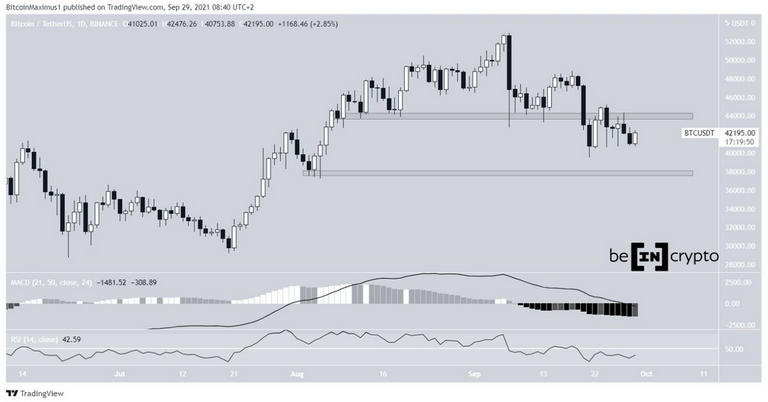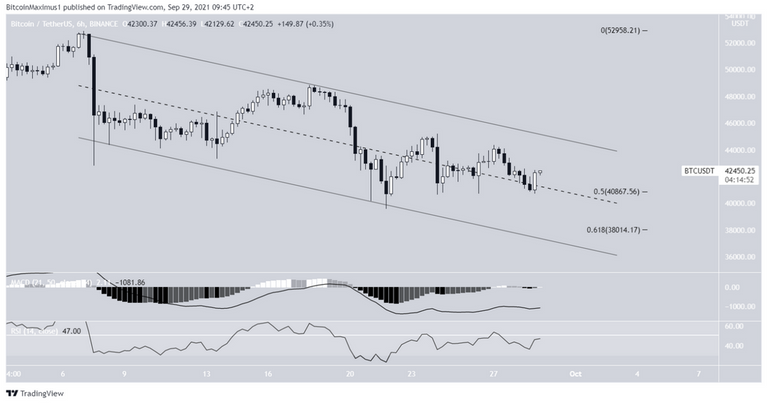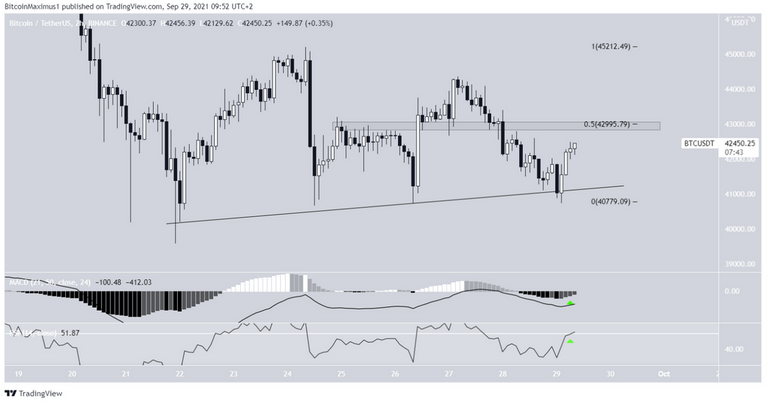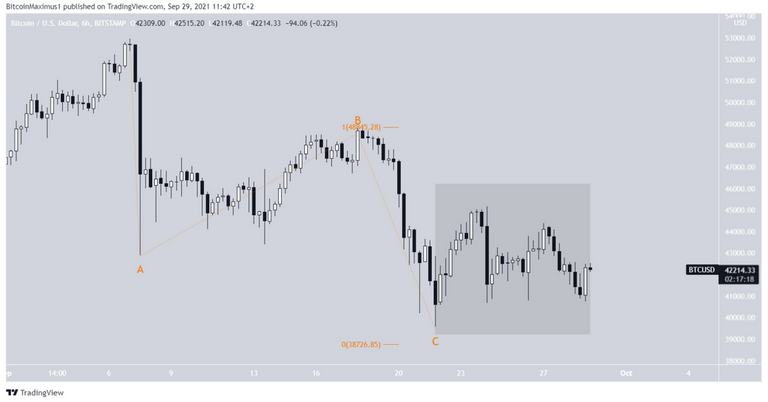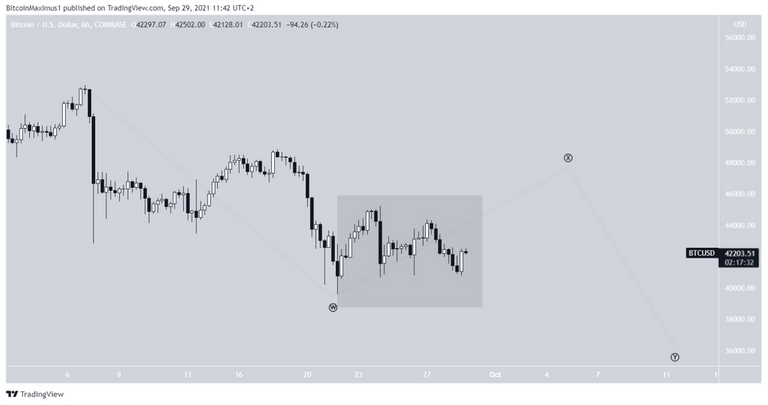Bitcoin (BTC) Floats Above $42,000 Support
Bitcoin (BTC) failed to move above the $44,000 resistance area but is trading inside a short-term descending parallel channel.
While there are short-term bullish signs in place, the longer-term readings indicate that the trend is likely bearish.
Bitcoin regains footing
On Sept 27, BTC was rejected by the $44,000 resistance area, creating a long upper wick and a bearish candlestick. It followed this up by another decrease the next day.
However, it seems to have regained its footing on Sept 29 and is in the process of creating a bullish candlestick.
It’s currently trading close to the $42,000 support area created by the wick from Sept 27.
However, technical indicators are still bearish since the MACD and RSI are both moving downwards.
Therefore, until the $44,000 area is reclaimed, the trend cannot be considered bullish.
The closest support is found at $38,000.
Parallel channel
The six-hour chart shows that BTC is still trading inside a descending parallel channel. Such channels often contain corrective structures.
Furthermore, it’s trading in the upper portion of this parallel channel after bouncing at the 0.5 Fib retracement support level. In addition to this, both the MACD and RSI are moving upwards. Therefore, the six-hour reading still indicates that a breakout would be the most likely scenario.
The two-hour chart is in alignment with this assessment. It shows that BTC is following an ascending support line and bounced from it for the third time yesterday.
Furthermore, both the RSI and MACD are moving upwards and the former is in the process of crossing above 50.
If BTC manages to clear the $43,000 resistance area, which is the 0.5 Fib retracement resistance level and a horizontal area, it would mean that a breakout from the channel should follow.
Wave count
The most likely wave count would suggest that the Sept 7-21 decrease was a completed A-B-C corrective structure. If so, waves A:C had very close to a 1:1 ratio.
However, the ensuing bounce (highlighted) does not look impulsive. Therefore, it casts some doubt on the possibility of this being the correct count.
An alternative count may be that the entire decrease was part of a W wave, indicating that BTC is in a complex corrective structure and is currently completing the X wave.
The possibility of this being a 1-2/1-2 wave formation is there but currently seems unlikely.
Therefore, at the current time, the wave count cannot be accurately determined.
However, the most likely counts both point to a short-term increase, even if the longer-term movement differs considerably.
Posted Using LeoFinance Beta

